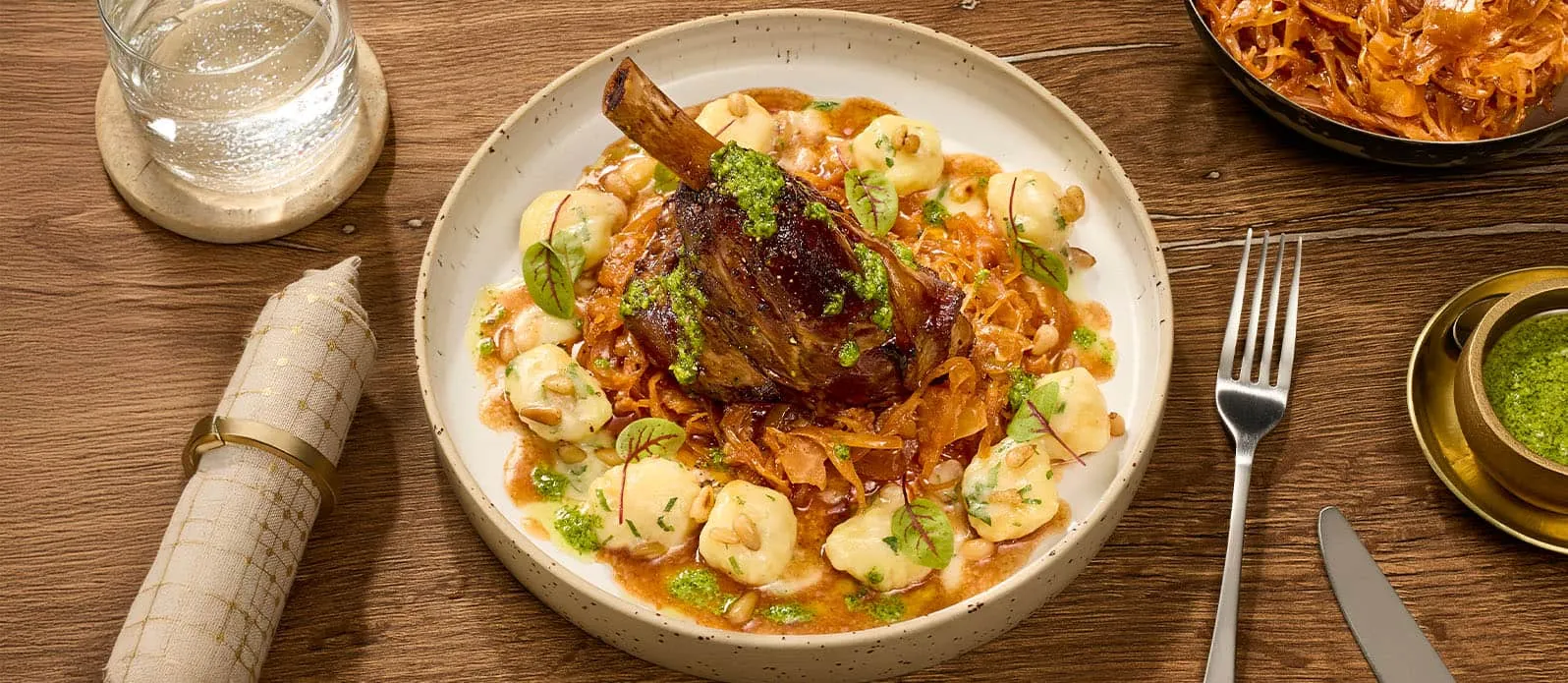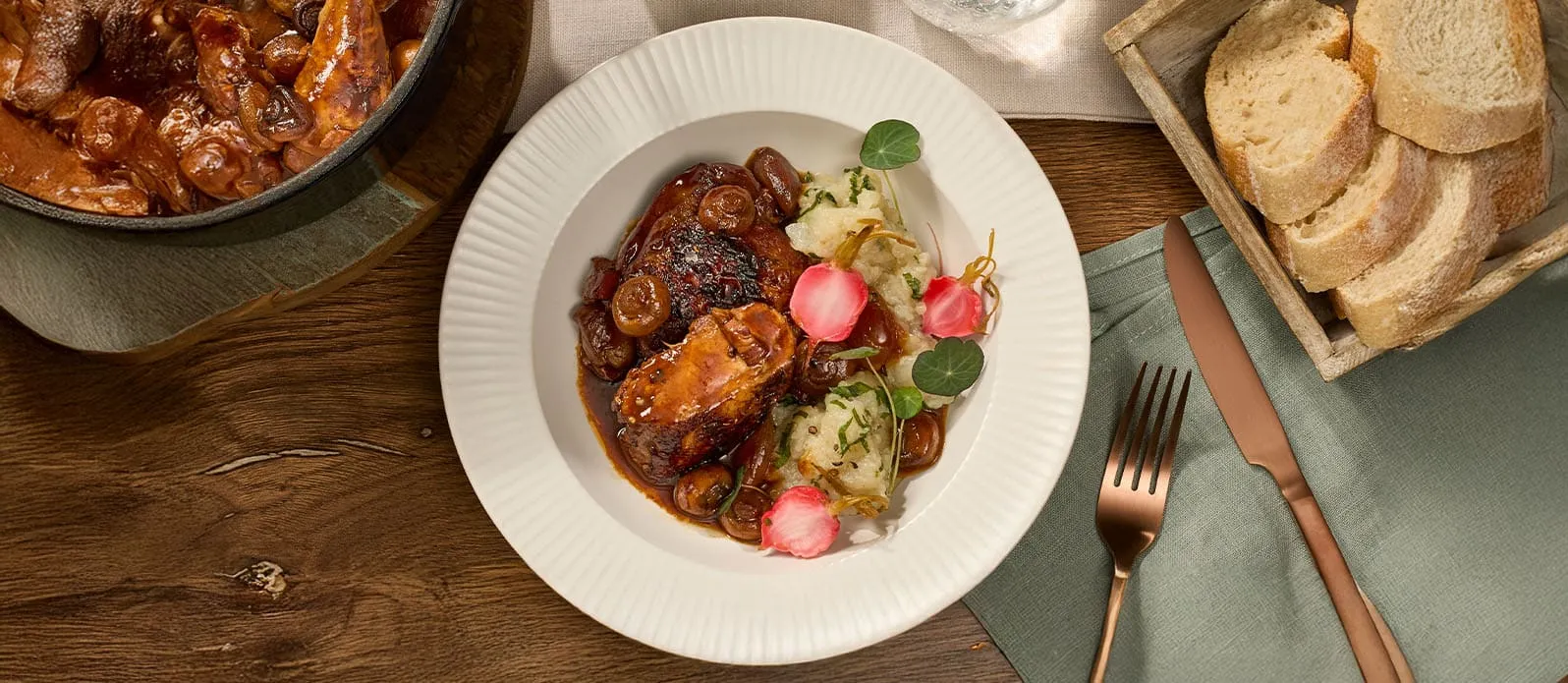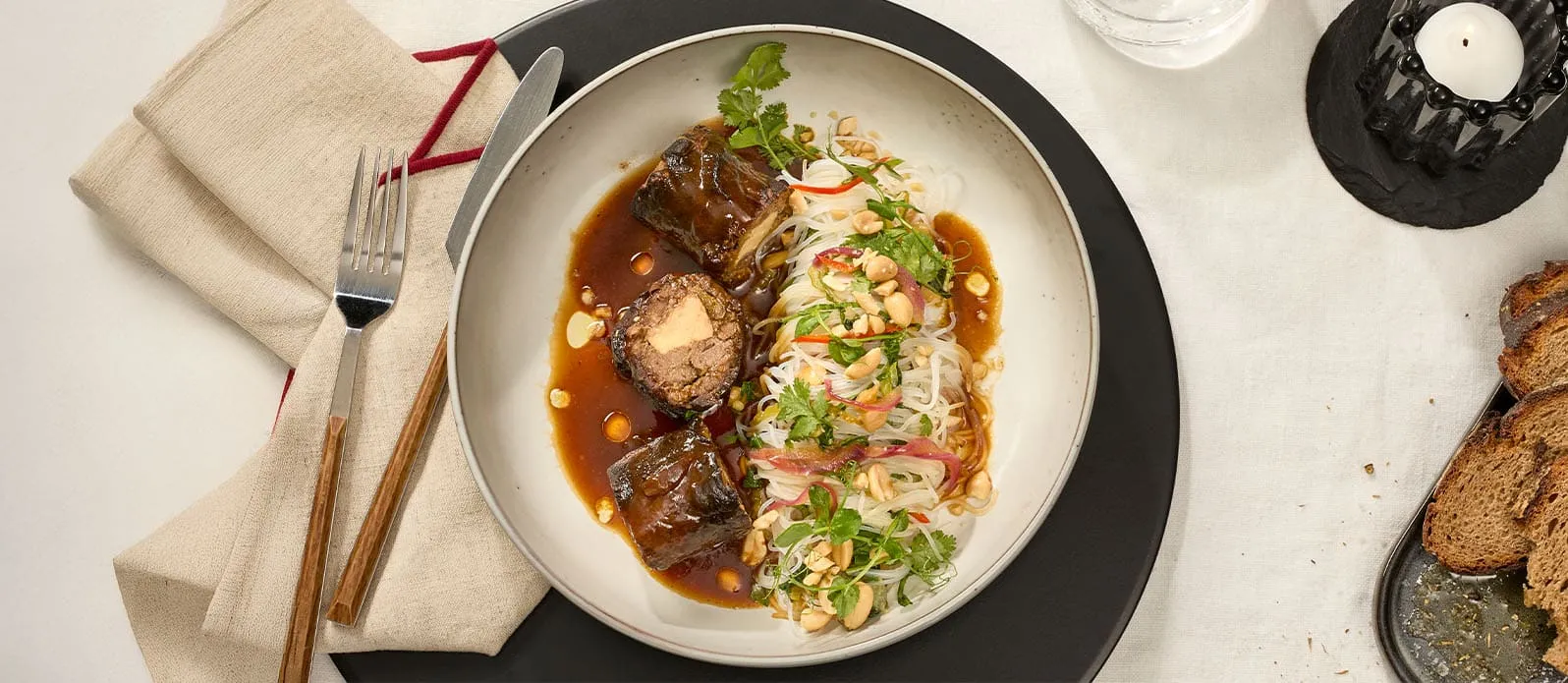K-trendsetter – how to set your professional kitchen apart with Korean dishes
30. October 2024

What makes Korean cuisine so popular in Europe?
The triumphal march of Korean cuisine is no coincidence – and it has less to do with dancing K-pop idols and beauty serums than you might expect.
The Korean Food Promotion Institute has been working since 2010 to preserve, promote and make Korean cuisine known around the world. With the backing of the Korean government, the KFPI's vision is to convey the values of Korean cuisine both in South Korea itself and abroad.
And with good reason: Korean cooking is considered healthy and balanced. A hallmark of the cuisine is the so-called "banchan" – numerous small side dishes often served free of charge alongside the main course in restaurants. They often feature deliciously seasoned vegetables. And what else is a must? Kimchi, of course!

Pickled, fermented cabbage or radish is a staple in almost every Korean meal. The lactic acid bacteria produced by the fermentation are particularly good for digestion. A benefit that harmonises with other Korean dishes, which are often low in fat, packed with vegetables and very spicy, making them particularly healthy. But kimchi is also indispensable as a palate cleanser, and no serving of crispy yet fatty Korean fried chicken or the famous Korean corn dogs would be complete without the tangy, spicy cabbage as a counterbalance.
Modern Korean dishes: the fusion of two culinary worlds
What has also contributed to the success of Korean cuisine, however, is its openness to ingredients and cooking methods from around the world. Korean food culture is one of the few Asian culinary traditions that effortlessly incorporates Western influences. The fusion of typical European and American dairy and meat products with Korean ingredients and spices has created exciting and delicious combinations.
Take, for example, "rose tteokbokki", where a classic Italian tomato and cream pasta sauce is transformed into a Korean comfort dish. The famous rice cakes are seasoned with spicy Korean gochujang chilli paste and soy sauce instead of tomato paste. Added to the mix are typical Korean fish cakes and mini cocktail sausages, while milk, cream and plenty of cheese make the sauce extra creamy.
The global success of "buldak carbonara", Korean ramen noodles with a carbonara-inspired sauce, is also based on a similar concept. Even Spam, which we know as tinned breakfast meat, is integrated into Korean dishes such as kimbap or stews. This might sound odd at first, but it works.

The key to this cuisine is the distinctive Korean seasoning! In addition to high-quality soy sauce, common ingredients include sesame oil, garlic and hot spices. Gochugaru, a popular red chilli powder made from Korean chillies, is essential for marinating kimchi, as is gochujang, a red chilli paste that's not only spicy but also savoury and slightly sweet, thanks to a special fermentation process. This particularly delicious heat is also characteristic of our Kikkoman Spicy Chili Sauce for Kimchi. For adventurous food vendors keen to experiment with new flavours like the Koreans, it's the perfect way to add the unique taste of Korean dishes and a hint of kimchi to any meal.
What can food service professionals learn from Korean cuisine?
When European food vendors consider how to incorporate the Korean food trend into their menus, it's not about direct imitation. The essence must be felt, and diners need to notice the Korean influence. How can this be done?
Tteokboki
These thick, white Korean rice cakes have a similar texture to gnocchi or thick noodles, making them a perfect substitute for pasta in classic Italian dishes or casseroles.

Japchae or dangmyeon
"Japchae" is Korea's answer to European pasta salad. Finely chopped, stir-fried vegetables like carrots, onions, spinach or mushrooms are mixed with cooked sweet potato glass noodles, known as "dangmyeon", and served hot or cold. The dressing typically consists of soy sauce, garlic, sesame oil and sesame seeds. For food vendors, this type of noodle salad - or the use of dangmyeon - can be a real boon. Because when the sweet potato glass noodles are combined with, for instance, Kikkoman Naturally Brewed Tamari Gluten free Soy Sauce, the dish is entirely gluten-free! Of course, dangmyeon can also be used for many other dishes, and since they're sturdier and more al dente than other glass noodles, they even make a great alternative to spaghetti.
Korean fried chicken
What sets Korean fried chicken apart is not the chicken itself, but the sauce served with it – and it's both quick and easy to make. All you need is a little garlic, ginger, brown sugar, gochujang and, of course, a high-quality soy sauce like Kikkoman Naturally Brewed Soy Sauce. With this base, food vendors can experiment: nuggets can be served with the sauce as a starter, chicken mains get an extra kick, and other traditionally deep-fried dishes such as chips or schnitzel take on an exotic twist.

Bulgogi
Although bulgogi literally means "fire meat", this has nothing to do with the taste and everything to do with the way the meat is prepared. Bulgogi is probably Korea's most popular way to marinate meat for the (table) grill. And savvy food vendors will instantly see the potential here – because this marinade isn't only ideal for the thinly sliced beef favoured by Koreans but also for the many other grill staples in Europe.
What's special about this marinade is that it makes the meat exceptionally juicy and tender. That's because, in addition to garlic, sesame, spring onions, rice wine, soy sauce and brown sugar, there's another special ingredient: puréed nashi pear! (also known as Asian pear or apple pear). Its acidity makes the meat particularly tender, a trick that also works with chicken, pork or lamb. And if you can't find a nashi pear, you can substitute it with a European pear or even a kiwi.
A quick and easy way to try this marinade is with Kikkoman Yakitori Sauce - Glaze & Marinade – a seasoning sauce based on naturally brewed soy sauce that you can mix with a little extra garlic, spring onion and pear. Let it marinate for 30 minutes, then get grilling. You won't be disappointed!
A new take on Korean flavours
Would you like even more specific inspiration on how to integrate the Korean trend into Western cuisine? Then check out our other recipe suggestions, and let us tempt you with a taste experiment.












![[Translate to Englisch (EU):] [Translate to Englisch (EU):]](https://www.kikkoman.eu/fileadmin/_processed_/c/0/csm_F1095-recipe-page_Venison_with_kimchi_potato_strudel_Desktop_Header_48d8788290.webp)
![[Translate to Englisch (EU):] [Translate to Englisch (EU):]](https://www.kikkoman.eu/fileadmin/_processed_/5/a/csm_F1096-recipe-page_Venison_ossobuco_with_sweet_potato_puree_Desktop_Header_18aae1c2b7.webp)
![[Translate to Englisch (EU):] [Translate to Englisch (EU):]](https://www.kikkoman.eu/fileadmin/_processed_/6/8/csm_F1097-recipe-page_Teriyaki_wild_boar_noodle_broth_Desktop_Header_d865a2f347.webp)
![[Translate to Englisch (EU):] [Translate to Englisch (EU):]](https://www.kikkoman.eu/fileadmin/_processed_/a/c/csm_F1098-recipe-page_Kimchi_risotto_with_crispy_goose_breast_Desktop_Header_c80fcbd4ec.webp)
![[Translate to Englisch (EU):] [Translate to Englisch (EU):]](https://www.kikkoman.eu/fileadmin/_processed_/e/d/csm_F1099-recipe-page_Goose_tacos_with_salsa_and_caramelised_squash_Desktop_Header_71f122e2f3.webp)


